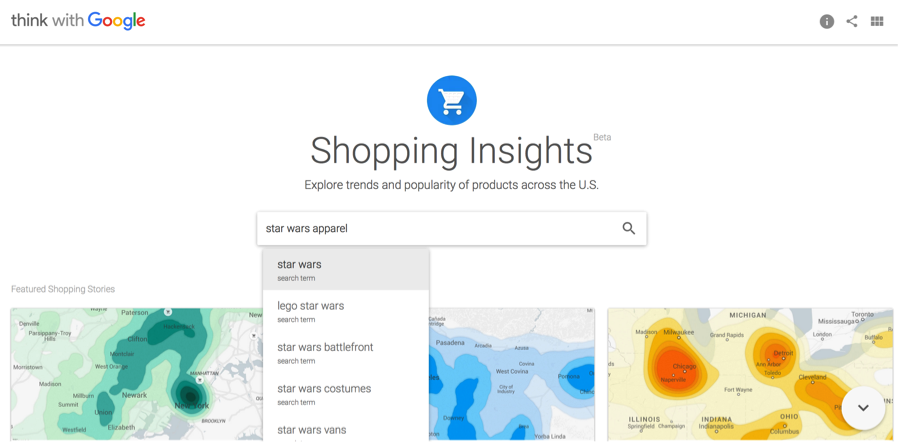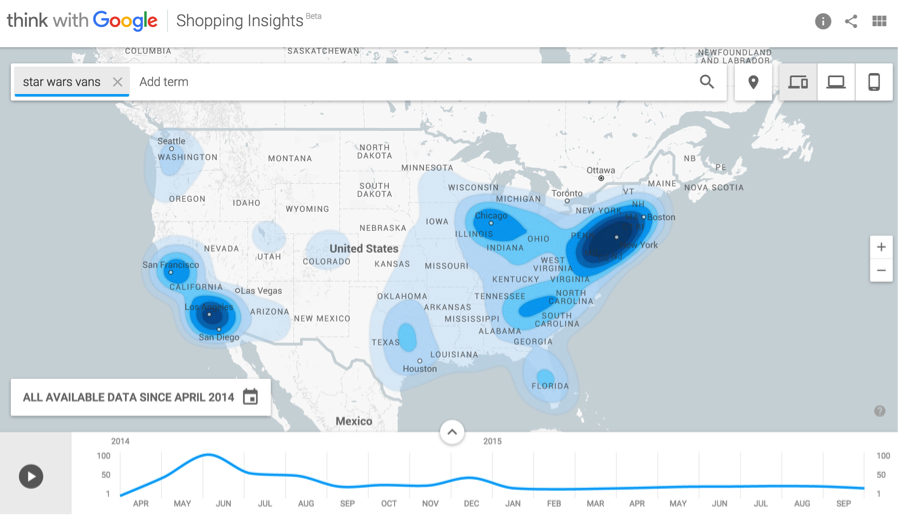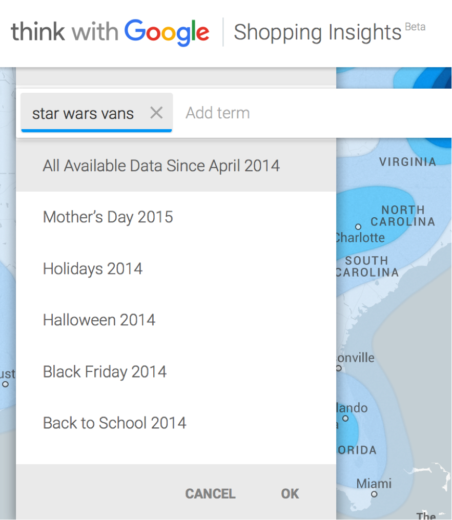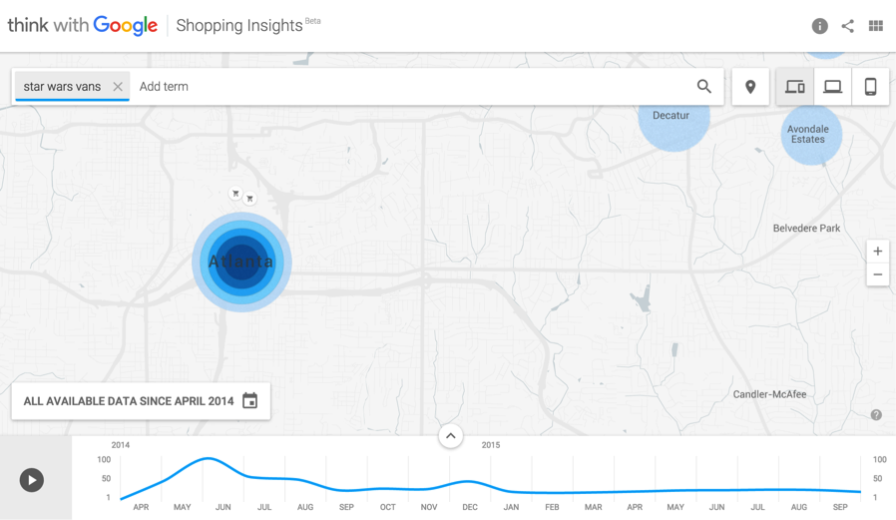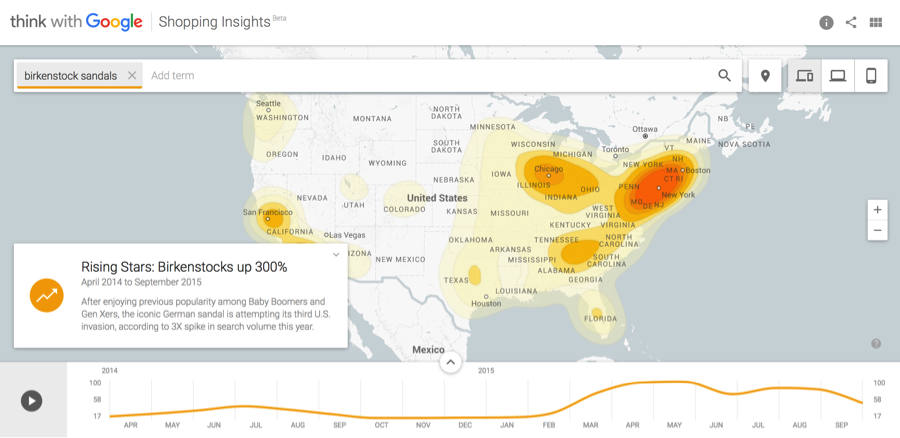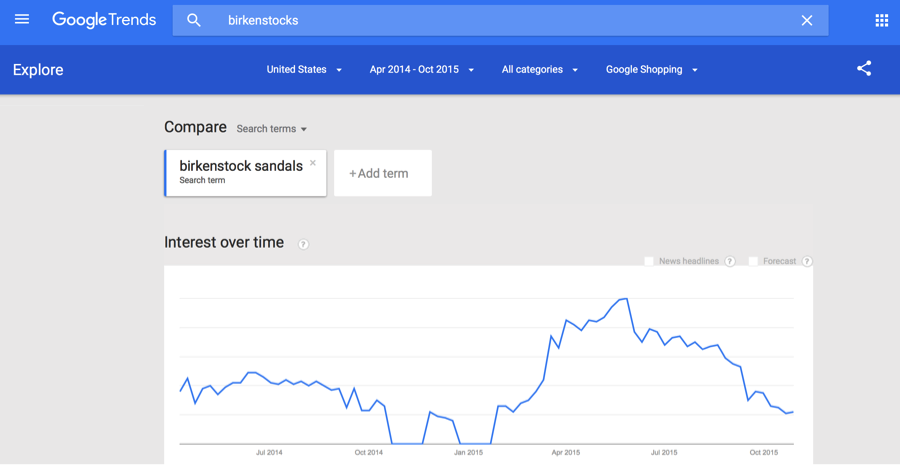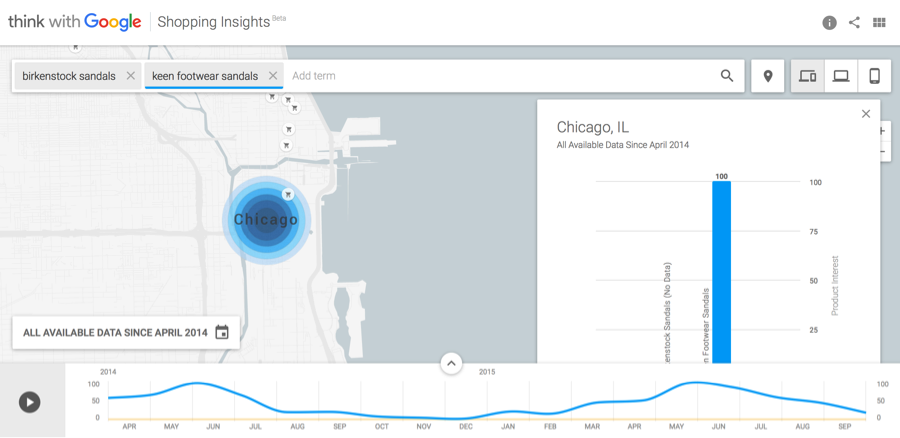For those of you who missed last month’s announcement, Google has released a new gadget called the Google Shopping Insights Tool. And while I strive to embrace the tools and products with which our advertising platforms provide us, my opinion on the latest release was too strong to keep quiet. I feel it is my obligation, as a citizen of the PPC world, to provide you with my own dissection of this product and its limitations. But to keep things from looking too bleak, I’ll also provide you (and the Googlers) with my own recommendations for improvement.
A) What Is The Purpose Of The Google Shopping Insights Tool?
According to Google, the intended use of this product is to:
- Measure consumer interest on products at a national, regional, and city level
- Compare demand across geographies, time, and device context
- Get ideas for local promotions, and investments between mobile and desktop
The theme here is local and unless you’ve been hiding under a rock for the past 12 months, you’ve probably noticed that Google is doing everything it can to promote the crossover between online spending and local consideration and attribution.
The breakdown to follow identifies the areas of weakness that I find too challenging to overcome.
B) My Issues With This New Release
(For those who want to try it but are wary: for all others, pass “Go” and skip to section C: What I prefer and why)
Product Choices
Now Google fully explains what products are available and why in their original Beta Release details, but the overarching reality is that this product is new. They’re still identifying what data to use and where it’s beneficial to invest more time and development. Although this doesn’t discredit all practical use, it certainly limits what the Google Shopping Insights are capable of.
When it comes to the actual product you want to diagram, you can’t just go searchin nimbly bimbly – you must select from their preset options.
Apparently “star wars apparel” isn’t a choice on their list, so instead we opt for the next best thing….
Immediately, I lose some value in this tool. If I carry Star Wars apparel in my shop and yet can’t pull any numbers for the trends or search volume for it, I am stumped. For argument’s sake, we’ll say I do sell Star Wars Vans shoes. In this case, I can see the direction Google is pointing me for where I might set my geo targets or increased bids.
But unfortunately, this isn’t the only snag I hit.
Timeline Options
In constructing Google Shopping Insights, it’s clear that we’re being directed toward the biggest shopping seasons: Back to School and the winter holidays. Although my suspicion is that these date restrictions will lift as the tool becomes more developed, at this time, our choices are as follows:
We aren’t able to compare year over year trends as data begins at April 2014. Although I appreciate the option to view these specific windows of time, I immediately felt limited to the details of Google’s timeframes, not my own.
Like the product lists, this constriction doesn’t ruin the Google Insights tool, but it certainly pushes back on the user’s own customization, as does the next detail.
Geo Data
First and foremost, the heat maps we see in this product are total volume. This means the areas with the highest populations are inherently going to show more concentrated interest than less populated regions. Although this makes initial sense—who cares if it looks skewed, the number of shoppers is simply greater for these areas, right? The fact that this entire tool is based on a relative scale with “100” being the greatest volume leaves us with uncertainty. Sure, compared to NYC, Atlanta may have low volume, but if I don’t have stores in New York, this level of data suddenly becomes useless. Atlanta is suddenly dwarfed by bigger cities’ data.
I do have the option to search more geo-specific trends, and because this product is intended to be specific for local stores, let’s zoom in a bit more:
I can only look through a set list of products and on the off chance that my store is located in an area that generates search traffic for this product, my takeaway is that I should potentially consider bidding more aggressively in this area on these items.
If we were to use the geo-options of this tool to determine the value of Google Shopping Insights, we’d be in trouble. As a heavily invested PPC manager, I see these numbers and estimates as fuzzy nods to traffic that, on a relative scale, may impact my sales. Possibly.
But that can’t truly be all this tool has to offer. In fact, I’ve seen similar, potentially better, options elsewhere…
C) What I Prefer And Why
I’ll stay true to my promise and not focus solely on the disappointments or frustrations I’ve encountered with the new Shopping Insights tool. In fact, I have a perfect idea for the Google minds behind this product: a hybrid of the existing Google Trends tool with the Shopping Insights functionality and detail.
As a reminder, the Google Trends tool does something similar. It, too, operates off of a percentage-of-total traffic model, where the point of greatest search is valued at 100 and all other searches are proportionate to that peak.
The Google Trends tool does allow for many of the same features as the new Google Shopping Insights tool:
- Shopping searches only (in addition to Web searches, news, etc)
- Custom date ranges
- Geo-segmentation
- Data provided on scale of 1-100
- Trend comparison between terms
What’s the big difference? Why did they even try to produce a new version?
The Google Shopping Insights tool is constructed for big e-comm holidays, and for geo-specific trends.
The new release is intended to help retailers target specific search volume where they see the greatest market share. Although the Google Trends product allows you to see search details for specific areas, I’ve found that this tool quite frequently returns an “insufficient data” result. And seemingly more often than the new Shopping Insights product.
Case In Point:
Google Shopping Insights provides a dozen or so “featured stories,” so I selected one of these products for our tool comparison: Birkenstock sandals.
The featured story within Google Shopping Insights shows traffic for the Birkenstock sandals to trend as follows:
We can see the rise in brand awareness as well as the areas of highest interest. But as I mentioned, I want to see more detail. In fact, I want to know what the similar trends are. With Google Trends, I can include not just the recommended term “Birkenstock sandals” but also any other search term I’d like to target.
For simplicity’s sake, let’s look solely (ba-dum- tsssss!) at the current term “Birkenstock sandals” through the Google Trends lens:
What’s most interesting here is that the trends between the two products are somewhat similar. There was a low but steady stream of interest in 2014, and then a sudden rise this past spring. Two points for consistency, Google.
The next point, however, is more troubling. In the Google Trends estimates (below) we see that the geographic targets result in an “insufficient data” notice when it comes to zooming in on local traffic.
Google Shopping Insights, on the other hand, shows me the volume of the Windy City with no hesitation.
It’s my hypothesis that because of the grand promotion of the Google Shopping Insights tool, there is more invested in generating actual local data in these graphs. The Google Trends results offer a much greater variety of search estimates, meaning the data behind the geo-detail may be sacrificed.
D) Which Tool To Love The Most
My recommendation for those of you searching for the best option is to consider your greatest goal.
If your plan is to utilize your geo bid modifiers to their fullest extent and you have somewhat mainstream products or brands and 2014 data is relevant to your market, then the new Google Shopping Insights tool is your best bet.
If you’re looking for information on your specific product or brand awareness over time and have a lower interest in overall market trends by location and are seeking insights to related or rising searches for your product, then I’d suggest staying with the Google Trends tool.
And of course, my greatest recommendation of all is to merge the two products so that we can gain local insights for relevant products and related searches for any time frame. But for now, I’ll just add that to my “Dear Google” Christmas List.




